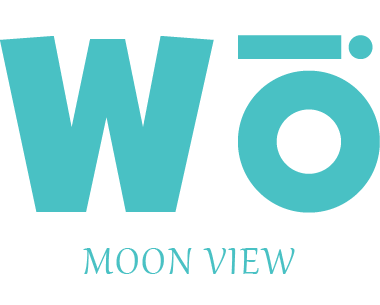Content marketing is a strategic approach focused on creating and distributing valuable, relevant, and consistent content to attract and retain a clearly defined audience, ultimately driving profitable customer action. At its core, content marketing seeks to provide useful and informative content that builds trust and establishes a relationship with potential customers.
Why Content Marketing Matters
Content marketing is crucial for several reasons, making it an integral component of modern marketing strategies:
- Builds Brand Awareness By consistently creating and sharing valuable content, businesses can increase their visibility and recognition among potential customers.
- Establishes Authority and Trust High-quality content positions a brand as an authority in its industry, fostering trust among its audience.
- Educates the Audience Content marketing helps inform potential customers about products, services, and industry trends, empowering them to make informed decisions.
- Improves SEO and Organic Traffic Regularly publishing relevant, optimized content improves search engine rankings, driving more organic traffic to your website.
- Generates Leads and Conversions Effective content guides potential customers through the buyer’s journey, converting visitors into leads and leads into customers.
- Enhances Customer Engagement Engaging content encourages interaction, fostering a sense of community and stronger customer relationships.
- Supports Other Marketing Efforts Content marketing complements other strategies like social media and email marketing, providing valuable material to amplify your efforts.
- Cost-Effective Compared to traditional methods, content marketing is often more cost-effective, delivering a higher return on investment.
- Provides Valuable Insights Analyzing content performance offers insights into audience preferences and behavior, informing future strategies.
- Fosters Customer Loyalty Consistently delivering valuable content maintains a connection with existing customers, encouraging repeat business and recommendations.
Content Strategy vs. Content Planning
Content Strategy:
- Definition: A high-level vision guiding content development and management, involving setting goals, understanding the target audience, and determining how content achieves business objectives.
- Components:
- Goals: Objectives for your content (e.g., brand awareness, lead generation).
- Audience: The target demographic, including their needs and behaviors.
- Core Messaging: Key messages to communicate.
- Content Types: Formats to deliver your messages (e.g., blogs, videos).
- Distribution Channels: Where content will be published and promoted.
- Metrics: How success will be measured.
Content Planning:
- Definition: The process of organizing and scheduling content based on your strategy, detailing specific topics, formats, and timelines.
- Components:
- Editorial Calendar: A schedule outlining content publication.
- Content Ideas: Specific topics and themes.
- Content Formats: Formats for delivering content (e.g., articles, videos).
- Deadlines: Timelines for creation, review, and publication.
- Responsibilities: Assigning roles for content creation and distribution.
Organic Content and Its Importance
Organic Content:
- Definition: Content created and shared without paid promotion, designed to attract and engage an audience naturally.
- Characteristics:
- Unpaid Distribution: Relies on natural reach and engagement.
- Value-Driven: Provides valuable, informative, or entertaining content.
- Engagement-Focused: Encourages interaction (likes, shares, comments).
- SEO-Friendly: Optimized for search engines to improve visibility.
- Authenticity: More personal and authentic, building trust.
Benefits of Organic Content:
- Cost-Effective: No budget needed for promotion, making it cost-effective.
- Builds Trust and Credibility: High-quality content positions your brand as an industry authority.
- Long-Term Value: Continues to attract and engage over time.
- Improves SEO: Optimized content boosts search engine rankings.
- Fosters Community: Engages your audience, building a loyal community.
Content Classification: Beyond Organic Content
Content classification similar to “organic content” can be divided into categories based on how the content is distributed and promoted. Here are some key types:
- Organic Content
- Definition: Content that is created and shared without any paid promotion. It relies on natural reach and engagement.
- Examples: Blog posts, social media updates, videos, infographics, podcasts that are shared through owned channels without paid amplification.
- Paid Content
- Definition: Content that is promoted through paid advertising channels to reach a larger audience or specific target groups.
- Examples:
- Sponsored Posts: Paid promotions on social media platforms to boost reach and engagement.
- Display Ads: Banner ads or video ads on websites.
- Paid Search Ads: Ads that appear in search engine results.
- Native Advertising: Advertorial content that matches the look and feel of the platform it appears on.
- Earned Content
- Definition: Content that others create about your brand, often as a result of your own content efforts or public relations activities. It is earned through organic efforts rather than paid for.
- Examples:
- Press Coverage: Articles or mentions in the media.
- Guest Posts: Content written by others on your behalf or featuring your brand.
- User-Generated Content: Reviews, testimonials, social media posts, or videos created by customers or fans.
- Social Shares: Content shared by users on social media.
- Owned Content
- Definition: Content that you fully control and distribute through your own channels.
- Examples:
- Website Content: Articles, landing pages, and other materials on your own website.
- Blog Posts: Articles published on your blog.
- Email Newsletters: Regular updates are sent to your email subscribers.
- Social Media Profiles: Content shared on your own social media accounts.
- Whitepapers and Ebooks: Long-form content published and distributed through your own platforms.
Comparing Organic, Paid, Earned, and Owned Content
| Content-Type | Definition | Channels | Examples |
|---|---|---|---|
| Organic Content | Content shared without paid promotion | Owned channels (blog, social media) | Blog posts, social media updates |
| Paid Content | Content promoted through paid channels | Advertising platforms (Google Ads, Facebook Ads) | Sponsored posts, display ads, paid search ads |
| Earned Content | Content created by others about your brand | Media, customer reviews, social shares | Press coverage, user-generated content, guest posts |
| Owned Content | Content fully controlled by you | Your website, blog, email, social media | Website content, blog posts, email newsletters, whitepapers |
Each type of content serves different purposes and can be integrated into a comprehensive content marketing strategy to maximize reach, engagement, and effectiveness. Combining these different types allows you to leverage the strengths of each to achieve your marketing goals.
Conclusion
Understanding content marketing and its various classifications, such as organic content, helps create a comprehensive strategy that meets your audience’s needs and supports your business goals. By leveraging different content types and strategies, you can build brand awareness, establish authority, improve SEO, generate leads, and foster customer loyalty. Embrace the power of content marketing to drive your business success.
#ContentMarketing #OrganicContent #SEO #BrandAwareness #DigitalMarketing #ContentStrategy #ContentPlanning #Engagement #CustomerTrust #BusinessGrowth #MarketingTips #ContentCreation #SocialMediaMarketing #ContentTypes #CustomerLoyalty




